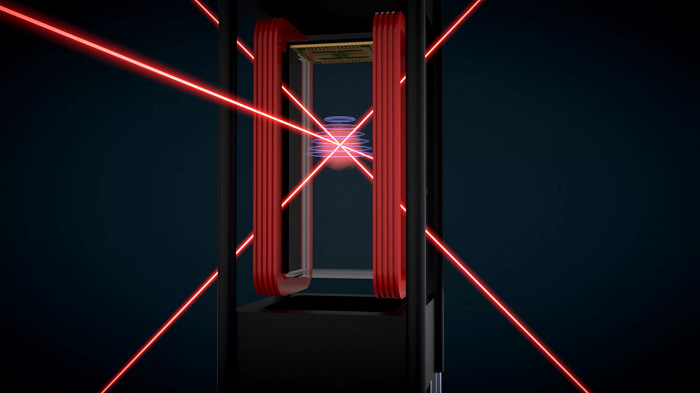NASA creates a cold point 10 billion times more than a vacuum
The device, which has been taken by NASA to the ISS station, will create a point of 100 million times more space than space by laser and magnetic force.
Scientists will create temperatures as cold as 10 billion times vacuum to focus on the strange quantum behavior of atoms when bringing the Cold Atomic Laboratory (CAL) to the International Space Station (ISS) today. over, according to Fox News. CAL is a physical research facility the size of a cold stone container designed by NASA's Jet Propulsion Laboratory (JPL) in California, USA.

CAL will create cold point near the absolute zero on ISS station.(Photo: NASA).
CAL will cool atomic clouds with laser and ISS-based magnets to supercooled temperatures close to absolute temperatures (about -273.15 degrees Celsius). The cargo trip to the ISS station yesterday carried some experimental equipment, including CALs. Researchers can conduct remote experiments with CALs without any astronauts' help for 6.5 hours a day, according to NASA.
Known as the Bose-Einstein condensate (BEC) , super-cold atomic clouds contain so cold atoms that they move extremely slowly. Under the gravity of the Earth, atoms in the BEC move so fast that the physical world cannot observe them for longer than a fraction of a second, so they have almost no chance to study their quantum characteristics.
However, everything is different in the micro-gravity environment on the ISS station. Unaffected by the gravity of the Earth, the atomic speed can be suppressed through laser beam and magnetic force in the cavity like an icebox. Laser beams slow down atoms, cooling them "to the point of absolute zero," said Robert Shotwell, CAL project manager and engineer at JPL.
Using CALs to study quantum activity, physicists can better understand the behavior of atoms at extreme temperatures, a key topic in the course of over 100 years. After atomic cooling, CALs will automatically drive them into weak magnetic traps for research. While atoms are fixed, the team can observe them in a series of quantum states and interactions. At this extreme temperature, researchers can consider BEC for up to 10 seconds.
"Researching super-cold atoms can change our understanding of matter and the fundamental nature of gravity , " said Robert Thompson, a scientist with the JPL project. "The experiments we will do with CALs will give us awareness of gravity and dark energy, two of the most common forces of the universe."
- NASA wants to create the coldest point in the universe
- History of the vacuum cleaner
- Sharp is coming out of the vacuum cleaner market to say
- Vacuum vacuum cleaner with 360 degree view
- Create light from a vacuum
- Check the vacuum hypothesis
- Vacuum lamps emit ultraviolet rays that are effective
- Netherlands launches the world's largest outdoor vacuum cleaner
- Vago - Compact vacuum machine, which saves luggage space
- NASA's billion-dollar probe began to fall freely into Jupiter
- How to vacuum food with ... 1 bowl of water
- Russian scientists introduced micro-vacuum cleaner to help clean the environment from harmful particles
 Van Allen's belt and evidence that the Apollo 11 mission to the Moon was myth
Van Allen's belt and evidence that the Apollo 11 mission to the Moon was myth The levels of civilization in the universe (Kardashev scale)
The levels of civilization in the universe (Kardashev scale) Today Mars, the sun and the Earth are aligned
Today Mars, the sun and the Earth are aligned The Amazon owner announced a secret plan to build a space base for thousands of people
The Amazon owner announced a secret plan to build a space base for thousands of people